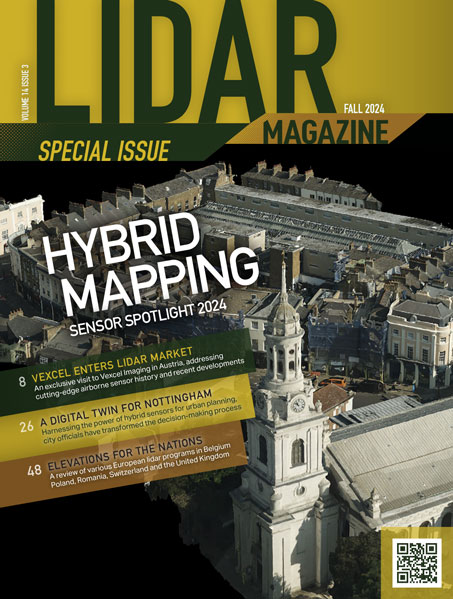Stuttgart/Braunschweig/Karlsruhe, 10 September 2019: European airspace is densely populated. Especially in the vicinity of metropolitan regions, the lowest airspace, i.e. the airspace up to 500 feet (around 150 metres) above ground, is already being used intensively by model and sports pilots as well as by police and air rescue helicopters. Thousands of aircraft movements take place every day without the population having to perceive any problems. Unmanned Aerial Systems (UAS) will be added in large numbers in order to exploit the enormous market potential, including in the transport of passengers and goods. Forecasts predict more than 200,000 UAS flying commercially in Europe from 2025 onwards. A conventional staggering of manned to unmanned aircraft by air traffic control and by “seeing” the pilots will then no longer be sufficient. Innovative solutions are in demand and are already entering the market. For the mass deployment of drones for the benefit of the population, the necessary infrastructure must be implemented in terms of urban planning and effective Unmanned Traffic Management (UTM) must be created.
Airspace Integration is one of four Master Classes being staged at the second EUROPEAN DRONE SUMMIT (EDS), which is taking place on 18 and 19 September in Stuttgart as part of INTERGEO, the world’s leading trade fair for geodesy, geoinformation and land management, and INTERAERIAL SOLUTIONS, Europe’s biggest trade fair for drones.
This Master Class on 18.09.2019 at 05:30 p.m. deals with the elementary questions of a safe integration of drones into the airspace and with innovative solutions, which enable a coordinated and cooperative flight operation of manned and unmanned aviation in the lowest airspace. It provides answers on what unmanned traffic management has to achieve, what technical requirements have to be made of UAS and which new technologies have to be introduced.
In the Master Class Andreas Kühnen (cloudeo AG) and Dr. Andreas Lamprecht (AirMap Deutschland GmbH) discuss with Michael Gadd, Head of International Regulatory Affairs at Altitude Angel, among others, the provision and use of data for conflict-free drone flight operations. For example, the British company Altitude Angel, under the name “Operation Zenith”, subjected its “GuardianUTM” platform to a much-acclaimed practical test at Manchester Airport at the end of last year.
Christian S. Struwe, Head of Public Policy DJI Europe, is working with EASA and the European Commission to ensure that the European regulations allow a safe and fair market for the UAV industry in Europe. He represents DJI in various UTM associations and says: “UTM should include a whole range of technology-independent services designed to make more advanced and riskier drone operations easier by providing a way to register drones, issue flight permits in restricted areas, and identify drones from long distance.”
Marina Solin is Policy Director at GSMA, who represents the interests of mobile operators worldwide. She will answer the question about the role the mobile industry will play in the safe integration of drones into airspace, especially with 5G technology. “Drones are an obvious candidate for connecting to mobile networks as they need a mobile connection in order to realize their impressive potential. Wireless connectivity will also be crucially important for the provision of key elements in unmanned traffic management, such as registration, identification, flight planning and approval, and much more besides,” Solin explains.
Mag. Philipp Piber heads the drone competence center of Austro Control GmbH, the Austrian Society for Civil Aviation. He reports on the status quo of the integration of drones into Austrian airspace.
Tomoyuki Hatori, Deputy Manager Air Traffic Management System at NTT Data Corporation, talks about a successful pilot project with an active anti-collision system in Japan.
J.D. Robert Keele, General Counsel at A³ by Airbus, will address the challenges of a regulatory framework that will enable the aviation of the future.
The Master Class offers all players, who depend on flight operations beyond visual line of sight (BVLOS) for their missions, the unique opportunity to place their questions directly with the expert panel.
The three other Master Classes will look at the subjects of “Safety and security using UAS as well as counter drone systems”, “Vertical Mobility in Urban Areas” and “Services backed up by UAS – rescue services / humanitarian aid”.
About the EUROPEAN DRONE SUMMIT
The EUROPEAN DRONE SUMMIT is the European platform for discussing the current needs of the UAS industry, both for people with an interest in the industry and for long-standing aficionados. The international conference sees speakers from the fields of politics, legislation, research, industry and business examine strategies designed to support the efficient use of UAS. The aim is to provide vital impetus for gaining public acceptance and to pinpoint solutions for ensuring commercial unmanned aircraft systems are used safely, securely and effectively in the skies over Europe.
The EUROPEAN DRONE SUMMIT is organised by UAV DACH e.V., the leading trade association for commercial unmanned aircraft systems, and HINTE Expo & Conference.
Information, programme and registration at https://w w w. europeandronesummit. eu
